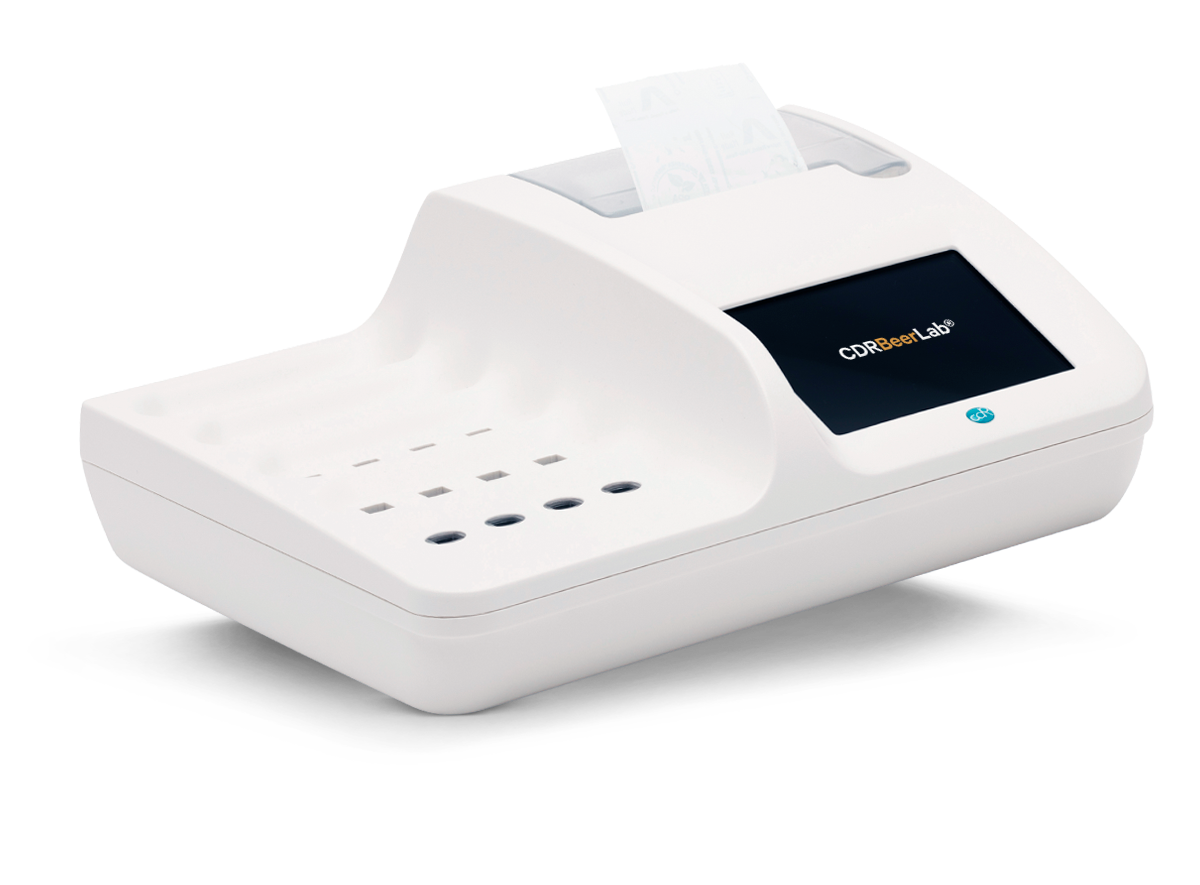Determination of Alcohol by Volume (ABV) in Beer
The test allows to measure alcohol by volume (ABV) in beer, which is an important quality parameter.
Features and Benefits of the determination of Alcohol by Volume in Beer with CDR BeerLab®
- the Method is simpler and faster than reference methods (hydrostatic balance)
- it does not need specific laboratory facilities, nor the dexterity of chemical analyst experts
- the results are correlated with the reference methods
- the test features high reliability and repeatability
- it has specific calibration for non-alcoholic beers and low alcohol beers
Method
Test Principle
Ethanol, in an alkaline environment, is oxidized through an enzymatic reaction and converted in acetic aldehyde in presence of NAD+, which in turns produces NADH. The increase of the absorbance, measured at 366 nm (end-point), is proportional to the concentration of ethanol in the sample.
...
Calibration Curve
Samples were analysed for Alcohol using both the CDR BeerLab® and the UKAS accredited gas chromatography (GC) method (Campden BRI Method AM/0 18 based on IOB Methods of Analysis, 1997, 9.10).
The international reference analysis laboratory Campden BRI in its report says “Statistical analysis suggested that in the majority of cases and based on current data there is no statistically significant evidence for a difference in alcohol measurements for beer when using the CDR BeerLab® versus the reference methods.”
...
Specific calibration for non-alcoholic beers and low alcohol beers
Samples were tested in the laboratory of QCL (CDR distibutor for UK) with the CDR BeerLab® and reference analysis was performed by Campden BRI, innovation, research and technology centre for the food and drinks industry. The table below compares ABV results from the CDR BeerLab® and Campden BRI with the values on the label.
...
The CDR BeerLab® results show very close agreement with the reference method across the range of samples. It is notable from these results that many of the beers have a higher ABV than the packaging suggests. This study demonstrates that the CDR BeerLab® is a reliable and accurate instrument for the measurement of ABV for low and no alcohol beers.
Reagent test Kits
Measuring range
| Analyses | Measuring range | Resolution | Repeatability |
|---|
The Analyzers for process and quality control in beer brewing
CDR BeerLab®
- Complete analysis panel, supplied already configured
- Up to 16 determinations simultaneously
- Possibility of carrying out analyses of the same sample
- Integrated printer
- Full connections (LAN - USB - Bluetooth barcode/QR code reader)
CDR BeerLab® Jr
- Partial analysis panel, supplied configured with 3 analyses of your choice, implementable
- Up to 3 determinations simultaneously
- Wireless connection to external printer
- USB connections
